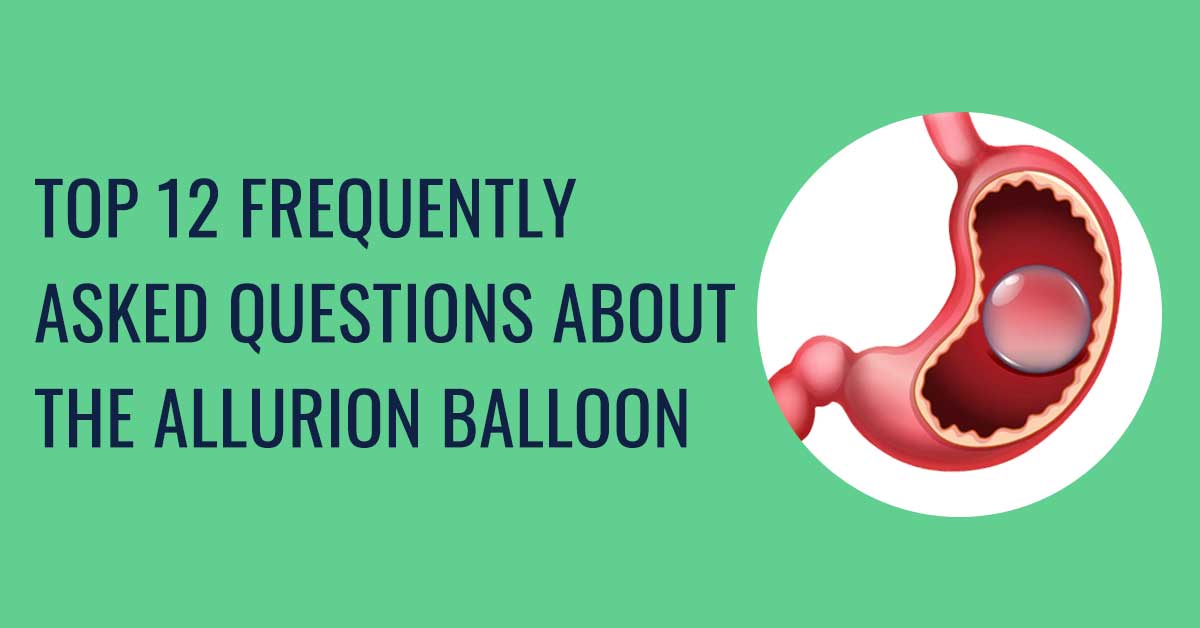If you are reading this article, it’s highly likely that you are looking for a safe therapeutic procedure to help you combat morbid obesity. If you are, look no further, because you have come to the right place.
Furthermore, you should know that you are not alone in your struggle. Morbid obesity is one of the world’s greatest health crises, with over half a billion people suffering from it globally. Patients fighting morbid obesity, while dealing with adverse psychological and social conditions, are also subjected to a higher risk of multiple obesity-related comorbidities such as non-alcoholic fatty liver, heart disease, type 2 diabetes, and cancer.
At Healthy Weight Australia we believe in multidisciplinary approaches to help patients achieve a healthy weight. To this end, we facilitate the latest, most affordable, and most efficient bariatric therapies currently available. In this article, we will be exploring everything that you need to know about the Allurion IGB (Intragastric Balloon). Previously known as the Elipse IGB, the Allurion balloon is a highly sought-after, minimally invasive (non-surgical), and cost-effective bariatric therapy available in over 50 countries and has brought satisfactory results to over 89,000 patients worldwide.
What Is An Intragastric Balloon?
Intragastric balloons, or IGBs, are a type of bariatric therapy. They have been proven to be a highly effective tool in combating morbid obesity. The average results of IGB treatments range from a loss of about 18% to 60% of excessive body weight. Furthermore, these therapies are highly appealing to a majority of patients as they are non-surgical. This makes them ideal for candidates who do not prefer invasive surgical procedures. Due to their minimal invasiveness, IGB treatments are associated with fewer complications than surgical treatments. This makes them one of the safest bariatric therapies available currently. Additionally, the significant reductions in excessive weight achieved through IGB treatments have a proven effect on reducing the risk of obesity-related comorbidities. They have been in use since 1985 and have been thoroughly studied.
Intragastric balloons are inflatable spheres that are ingested (orally), usually with the aid of an endoscopic device. They are filled up upon placement within the stomach with the use of a catheter, which is attached to the balloon. IGBs fall under two categories, depending on the substance that is used to inflate them, namely fluid and air. After complete inflation, the catheter is withdrawn, allowing self-sealing valves on the balloons to seal up. Due to the simplicity of these procedures, they take far less time than surgical bariatric therapies.
The Allurion Intragastric Balloon
The Allurion balloon, developed by Allurion Technologies Inc. in the USA, is the world’s first and only swallowable, non-surgical, and non-invasive IG balloon. What makes the Allurion balloon special over other IG balloons is that the procedure does not require endoscopic insertion or sedation for implantation or removal. Consequently, it is a highly suitable treatment option for patients who do not prefer surgeries or invasive therapies.
The composition of the Allurion balloon is that of a thin, flexible polymer film. This makes it much lighter than other available IGBs, making it more comfortable for the patient. It comes condensed in a vegan capsule that can be swallowed easily by the patient with the aid of some water.
The Allurion IGB also comes with a body composition scale (Allurion connected scale) and a health tracker watch (Allurion health tracker), which helps patients keep track of their weight-loss progress and stay motivated.
The procedure involved with the placement of the balloon is a simple one. The patient, aided by the physician, swallows the capsule encasing the balloon. Sedation is not required. Once the balloon is swallowed, an x-ray is taken to confirm its correct placement within the stomach. Then the balloon is inflated with 550 ml of distilled water. This is done using a thin catheter which is attached to the balloon via a self-sealing valve. Upon full inflation, the catheter is detached from the balloon and is pulled out. Finally, a second x-ray is taken to confirm the position of the inflated balloon. The entire procedure takes only 15 to 20 minutes.
How Long Will The Allurion Balloon Stay In The Stomach?
The balloon lasts approximately 16 weeks inside the stomach. The valve of the balloon degrades slowly over time, and in 16 weeks, it is fully degraded. The balloon then empties its contents into the stomach. The deflated polymer film can then be excreted naturally from the body. The passing of the balloon is painless and many patients do not even notice it passing out.
How Does The Allurion Balloon Produce Results?
The Allurion IGB is a space-occupying procedure. It achieves results by restricting the volume of the stomach. In fact, most IG balloons occupy a space similar to that of the volume of a grapefruit inside the stomach. Consequently, this directly reduces the amount of food that can be consumed in a single meal. Moreover, the presence of the fluid-filled balloon within the stomach delays gastric emptying and also produces a constant feeling of fullness or satiety in the patient, which reduces the need to eat often. Both of these effects combine to result in a drastic reduction in the amount of food consumed by the patient.
What Kind Of Results Can You Expect From The Allurion Balloon?
Average results of the Allurion IGB treatment range between 10-15% loss of total body weight. Furthermore, studies have shown a 26% loss of excess body weight and an average loss of 4.2 kg/m2 in BMI can be achieved. The loss of weight also contributed to a significant decrease in the risk of many obesity-associated comorbidities.
Apart from the initial results, patients can continue to achieve a further weight loss of up to 10 – 30 kg, by following the 12-month program provided by Healthy Weight Australia.
Are There Any Side Effects Associated With The Allurion Balloon?
Compared to other bariatric surgeries and therapies, the Allurion balloon has a relatively low rate of associated adverse effects. Studies show that less than 2% of patients have reported adverse effects. The most common of these are premature deflation and intolerance. Early retrieval of the balloon is possible in both these cases, and it’s not a complicated process.











